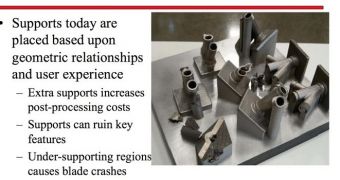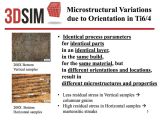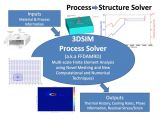Quality control is an intrinsic part of any item's development and mass production, but for 3D printing that proves a conundrum, especially when it's metal you're trying to build things out of. Scientists from the University of Louisville claim to have found a workaround though.
Said workaround consists of a piece of software that can simulate the repetitive process of printing the same part over and over again, instead of actually doing it.
You see, metal 3D printing is a necessarily delicate process, since it's used in the manufacture of things like engine and car/airplane chassis parts, among other things.
That means that the process has to be very precise, capable of getting the dimensions and material density right every time.
It takes time and resources to perfect a printing process though, especially on current technology. You have to print the same thing again and again, and make slight modifications to the machinery and sometimes the model itself, in order to get things right.
That takes a long time and a lot of money, neither of which humankind tends to be keen on.
Dr. Brent Stucker, from the University of Louisville, invented the 3DSIM software with the express purpose of simulating the quality control process.
So instead of actually doing the print again and again, you make the PC simulate the 3D metal printing, and perfect the process based on the results there.
Dr. Strucker tested the way identical titanium components are 3D printed, changing only the orientation of the item during the process.
When printed vertically instead of horizontally, an object suffered from residual stress with each new layer that was added.
That's why the two parts had vastly different (from an engineering point of view) physical forms. Support structures play a significant role here as well, affecting the print quality greatly depending on what angle they were supporting the print from.
Not just because of the stress suffered during the print, but also because the cleanup needed afterwards can damage the item’s integrity.
The 3DSIM predicts (or attempts to predict) the malformations by combining the simulation of material properties (where the program tries to predict the crystal level details of a material and their consequential mechanical properties) and the simulation of the printing process (analyze how temperature stress and distortion will affect the resulting structure).
Sadly, this can't be done in real time using existing analysis software and hardware. It should still be a lot faster than actually printing the things though. Industrial 3D printing stands to gain much regardless.

 14 DAY TRIAL //
14 DAY TRIAL // 

